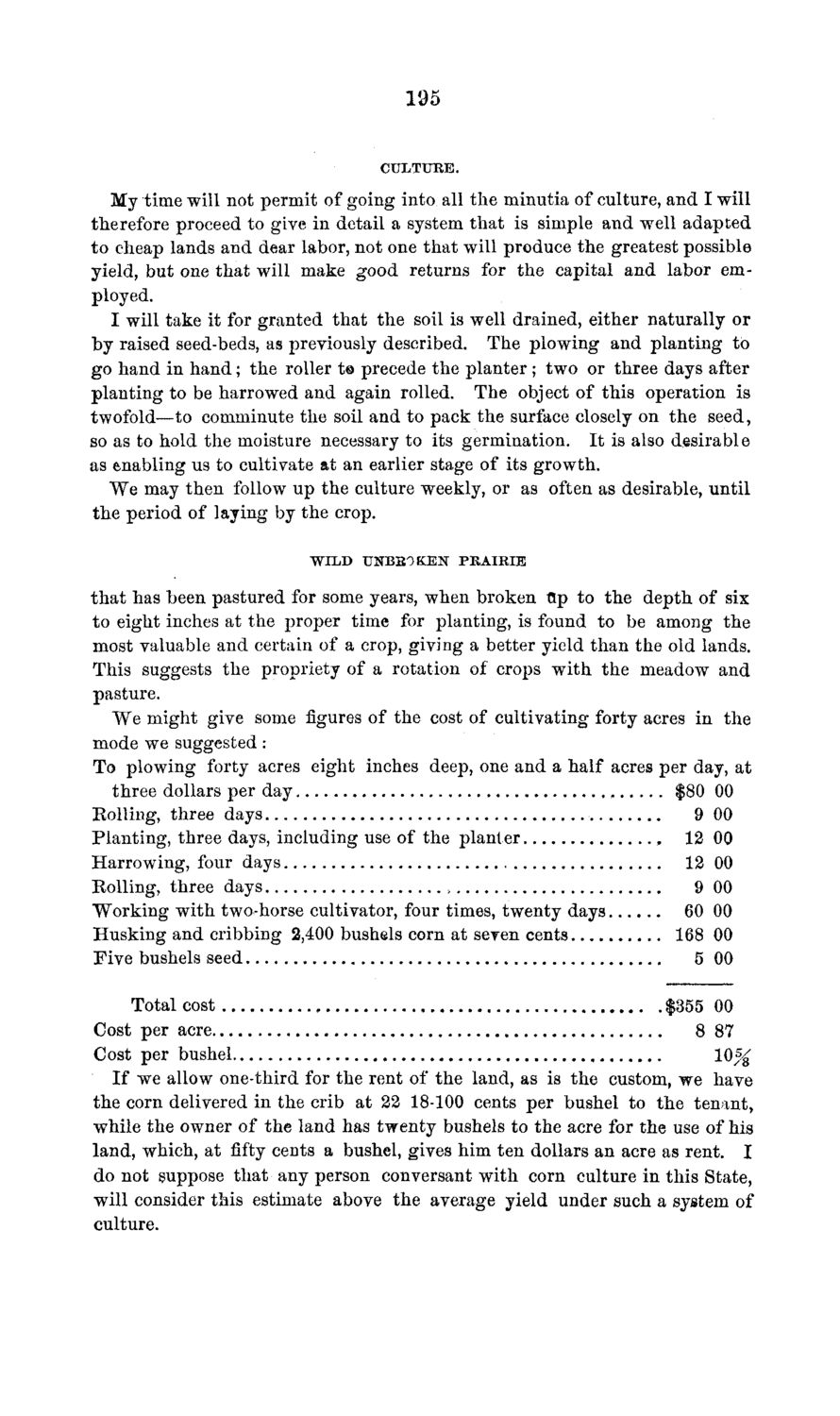| |
| |
Caption: Board of Trustees Minutes - 1869
This is a reduced-resolution page image for fast online browsing.

EXTRACTED TEXT FROM PAGE:
195 My time will not permit of going into all the minutia of culture, and I will therefore proceed to give in detail a system that is simple and well adapted to cheap lands and dear labor, not one that will produce the greatest possible yield, but one that will make good returns for the capital and labor employed. I will take it for granted that the soil is well drained, either naturally or b y raised seed-beds, as previously described. The plowing and planting to go hand in h a n d ; the roller t@ precede the planter ; two or three days after planting to be harrowed and again rolled. The object of this operation is twofold—to comminute the soil and to pack the surface closely on the seed, so as to hold the moisture necessary to its germination. It is also desirable as enabling us to cultivate at an earlier stage of its growth. We may then follow up the culture weekly, or as often as desirable, until the period of laying by the crop. WILD UNBBOKEN PRAIRIE t h a t has been pastured for some years, when broken tip to the depth of six to eight inches at the proper time for planting, is found to be among the most valuable and certain of a crop, giving a better yield than the old lands. This suggests the propriety of a rotation of crops with the meadow and pasture. We might give some figures of the cost of cultivating forty acres in the mode we suggested : To plowing forty acres eight inches deep, one and a half acres per day, at three dollars per day $80 00 Rolling, three days 9 00 Planting, three days, including use of the planter , 12 00 Harrowing, four days 12 00 Rolling, three days > 9 00 Working with two-horse cultivator, four times, twenty days 60 00 Husking and cribbing 2,400 bushels corn at seven cents 168 00 Five bushels seed 5 00 Total cost , $355 00 Cost per acre 8 87 Cost per bushel 10% If we allow one-third for the rent of the land, as is the custom, we have the corn delivered in the crib at 22 18-100 cents per bushel to the tenant, while the owner of the land has twenty bushels to the acre for the use of his land, which, at fifty cents a bushel, gives him ten dollars an acre as rent. I do not suppose that any person conversant with corn culture in this State, will consider this estimate above the average yield under such a system of culture.
| |